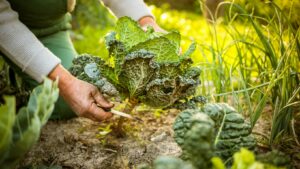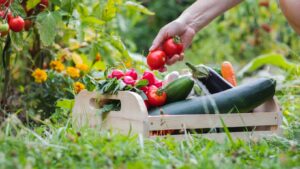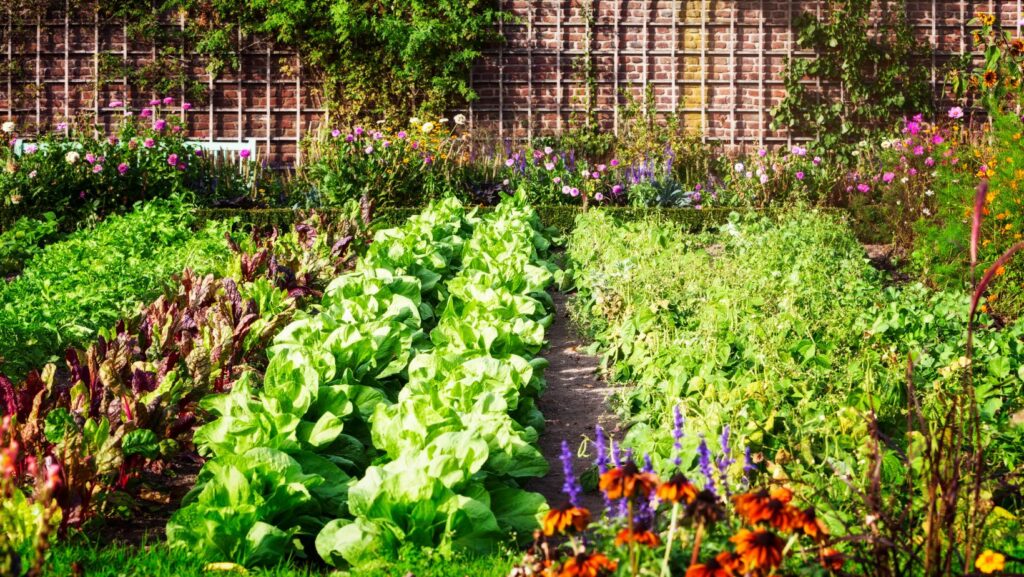In the vibrant world of horticulture, there’s an ever-growing interest in organic gardening. For those with a green thumb, it’s more than just a hobby—it’s an eco-conscious lifestyle that respects Mother Nature. This article delves into the fascinating universe of an organic gardening magazine, a treasure trove for gardening enthusiasts and nature lovers alike.
Organic Gardening Magazine
 Organic gardening, as defined by professionals, harnesses nature’s power to cultivate a lush, productive garden without using synthetic fertilizers or pesticides. This methodology prioritizes the health of the soil above all, ensuring that it’s brimming with organic matter and beneficial microorganisms. Diversity in plant species is also a key tenet of organic gardening; having a diverse range of plants invites essential insects and pollinators, promoting a harmonious ecosystem.
Organic gardening, as defined by professionals, harnesses nature’s power to cultivate a lush, productive garden without using synthetic fertilizers or pesticides. This methodology prioritizes the health of the soil above all, ensuring that it’s brimming with organic matter and beneficial microorganisms. Diversity in plant species is also a key tenet of organic gardening; having a diverse range of plants invites essential insects and pollinators, promoting a harmonious ecosystem.
Furthermore, organic practices focus on sustainability, implementing water conservation measures and recycling garden waste into useful compost. The principles of companion planting and crop rotation also play crucial roles, aiding in natural pest control and soil nutrient management respectively.
To fully appreciate these intricacies, an organic gardening magazine provides an in-depth look at these practices, offering guidance for novice and seasoned gardeners alike. As you delve further into the world of organic gardening, you’ll discover that it’s more than a method, it’s a philosophy grounded in respect for the intricate web of life that sustains us all.
Critiquing the Organic Gardening Magazine Layout
 The Organic Gardening magazine showcases a thoughtful yet visually appealing layout. Vibrant photos accompany informative articles, directly linking vivid imagery to educational content. Engaging visuals, like plant guides, diagrams illustrating companion planting, or multi-step composting processes, supplement text for easy comprehension. The Table of Content organizes the magazine’s various sections neatly, focusing on soil health, biodiversity, water conservation, and other organic gardening tenets.
The Organic Gardening magazine showcases a thoughtful yet visually appealing layout. Vibrant photos accompany informative articles, directly linking vivid imagery to educational content. Engaging visuals, like plant guides, diagrams illustrating companion planting, or multi-step composting processes, supplement text for easy comprehension. The Table of Content organizes the magazine’s various sections neatly, focusing on soil health, biodiversity, water conservation, and other organic gardening tenets.
Presented in a digestible manner, the font size and style enhance article readability, reducing eye strain, making it accommodating to a diverse readership. Breaking away from wall-of-text approaches, the magazine uses white space effectively, balancing textual content with images and leaving room for annotations or notes by readers. On top of magazine aesthetics, it enforces critical learning strategies, encouraging readers to engage actively with the material – reinforcing the organic gardening philosophy through a well-executed layout.
Analyzing the Magazine Content
Diving into the heart of Organic Gardening magazine, it exhibits a rich plethora of topics relevant to organic gardeners. It covers everything; detailed features on particular plants provide valuable knowledge. For instance, the magazine offers in-depth articles that touch upon carrots, clarifying their growth patterns and ideal soil conditions to optimize yield.
Another significant part of the magazine’s charm lies in the pieces on innovative gardening techniques. It offers pearls of wisdom, such as utilizing the principles of permaculture to design sustainable and productive spaces.
Sections dedicated to pest and disease control offer advice without resorting to synthetic materials, instead favoring organic solutions and beneficial insects. It emphasizes building ecosystem balance, highlighting examples like luring ladybugs to combat aphids.
Finally, the magazine delivers on delivering current news in the organic world, ensuring readers stay up-to-date. Recurring sections on regional gardening events, bioethical concerns, and fresh research findings enhance its value.
Overall, the magazine synergistically combines visually appealing graphics with in-depth, accurate information, making it an indispensable tool for gardeners.
Reviewing Organic Gardening Magazine’s influence
 Organic Gardening Magazine wields substantial influence in shaping eco-friendly gardening practices. Notably, its emphasis on sustainable practices, detailed plant features, and organic pest management guide readers toward greener and healthier gardens. For instance, articles on water conservation and composting inspire gardeners to adopt these environmentally conscious methods. Similarly, technique-focused stories—for example, pieces on permaculture—resonate widely among novices and experts.
Organic Gardening Magazine wields substantial influence in shaping eco-friendly gardening practices. Notably, its emphasis on sustainable practices, detailed plant features, and organic pest management guide readers toward greener and healthier gardens. For instance, articles on water conservation and composting inspire gardeners to adopt these environmentally conscious methods. Similarly, technique-focused stories—for example, pieces on permaculture—resonate widely among novices and experts.
The magazine’s strength lies not only in its content but also in its ability to visually inspire. Its graphics, depicting beautiful, thriving, organic gardens, encourage gardeners to replicate similar spaces. Importantly, these images also raise awareness about biodiversity and illustrate the interconnectedness of ecosystems in manageable and digestible terms.

